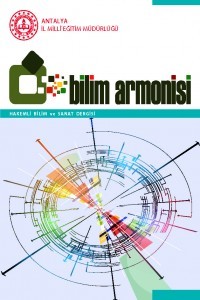Evrak-ı Dımaşk
Kur’ân-ı Kerîm’in Hz. Ebu Bekir döneminde tasnif edilen ve Hz. Osman zamanında çoğaltılarak belli bölgelere gönderilen, ilk nüshalarından kabul edilen Mushaf gibi erken İslâm devri eserleriyle birlikte Evrâk-ı Dımaşk (Şam Belgeleri); yaklaşık on asır boyunca bir araya getirilen Kur’ân yaprakları, ciltler ve çeşitli vakıf belgelerinden oluşmaktadır. İslâmiyet’in ilk asırlarında ceylan derileri üzerine yazılmış olan kayıtlar asırlar içerisinde bu dinin kendi sanatını yaratmasına neden olurken; Evrâk-ı Dımaşk, binlerce sene içerisinde cereyan eden bu değişimin canlı tanıkları olarak İslâm hat sanatı, tezhip sanatı, ciltleme sanatı gibi alanlar ile vakıf geleneği konularında günümüze ışık tutmaktadır. Belgeler, uzun yıllar -Ümeyye Camii- Şam Emevî Camii’nde korunup sonra Topkapı Sarayı’na nakledildiği için adını, geldiği yer olan Şam Emevî Camii’nden almıştır. Emevîyye Camii çeşitli asırlarda değişik çapta yangınlar geçirmiş, son büyük yangın Eylül 1893 de Osmanlı egemenliğinde II. Abdülhamit döneminde zuhur etmiştir. Bu büyük yangında camii ile birlikte, bir kısım belge hasar görmüş olmakla birlikte, kurtarılan belgeler Osmanlı başkentinde muhafaza ve tamir edilmek üzere İslâm ilimleri ve sanat dalları camiasına kazandırılarak ilmi istifade imkânına kavuşturulmuştur. Bu çalışmada, Şam Evrakları üzerinden olabildiğince Erken İslâm Dönemi eserlerinin özellikleri ile bu alanlardaki çalışma ve belgelerin günümüze uzanan serüveni tespit edilmeye çalışılmış ve içinde bulunduğumuz dönemde her biri alanında sanat şaheseri kabul edilen bu belgelerin bakım, onarım, saklama, koruma, paylaşma, teşhir, yayınlama koşullarının uygunluğuna dair görüşlerimiz ileri sürülmüştür. Araştırmamız sırasında, elde ettiğimiz çeşitli kaynaklara dayanarak, asırlar öncesine uzanan bu belgelerin günümüz ilim ve sanat camiasında olması gerektiği kadar tanınıp incelenmediği sonucuna varılmıştır.
Sham Docüments
Evrak-ı Damascus ‘’ Sham Documents ‘’ together with early Islamic monuments, such as Mushaf, which was classified in the Qur’an in the era of Hz Abu Bakr and accepted from the first copies sent to certain districts in the time of Hz Osman. The Quran leaves, binders and various foundation documents that have been gathered together for about ten centuries. While the writings on the ancestors of the ancestors of the first centuries of Islam cause this religion to create its own art within the ages, The Şam Documents shed light on the subjects of Islamic calligraphy, art of illumination, art of binding and foundation tradition as vivid witnesses of this change which took place in thousands of years. Documents have been taken from Sham Umayyad Mosque, which is the place where the name comes from, as it has been preserved for many years-Ümeyye MosqueSham Umayyad Mosque and transferred to Topkapı Palace. The Emevîye Mosque had various fires in various centuries, the last great fire in Ottoman rule in September 1893. It occurred during the reign of Abdülhamit. In this great fire, together with some documents damaged, the recovered documents were brought to the museum of Islamic science and arts, to be preserved and repaired in the Ottoman capital, and the opportunity of benefiting from the scholarship was brought to the possession. In this study, we tried to determine the adventure of the works of the Early Islamic Period as much as possible and the works and documents in these fields through the Şam Evrakları. Our views on the appropriateness of the conditions of maintenance, repair, storage, protection, sharing, display and publishing of these documents, each of which is considered to be an art masterpiece in the field, have been put forward. Based on the various sources we have obtained during our research, these documents dating back centuries have come to the conclusion that they are not as well-known and examined as they should be in today’s science and arts mosque.
___
- Anonim 2016. Koç Holding Basın Bülteni. 20 Ekim 2016. koc.com.tr/tr-tr/ koc.../basin.../PressRelease/Smithsonian-Basin-Bulteni-20_10_2016.p. Son erişim tarihi: 24.02.2018.
- Ateş, İ., 1978. Şam Ümeyye Cami ve Vakfiyyesi. Vakıflar dergisi. Cilt.XII s.27- 90.
- Beksaç, A. E., Yazıcı, T. 1995. Emevîyye Camii. DİA. Cilt.11. s. 108-109.
- Kazan, H. 2016. 1893 Yangını Sonrası Şam Emevî Camii Restorasyonu. Başbakanlık Osmanlı Arşivi, İrade Hususi Evrakı.17/13. Ss.334.
- Kazan, H. 2016. 1893 Yangını Sonrası Şam Emevî Camii Restorasyonu. Başbakanlık Osmanlı Arşivi, Yıldız Perakende Arzuhal ve Jurnaller. 27/79. ss. 335
